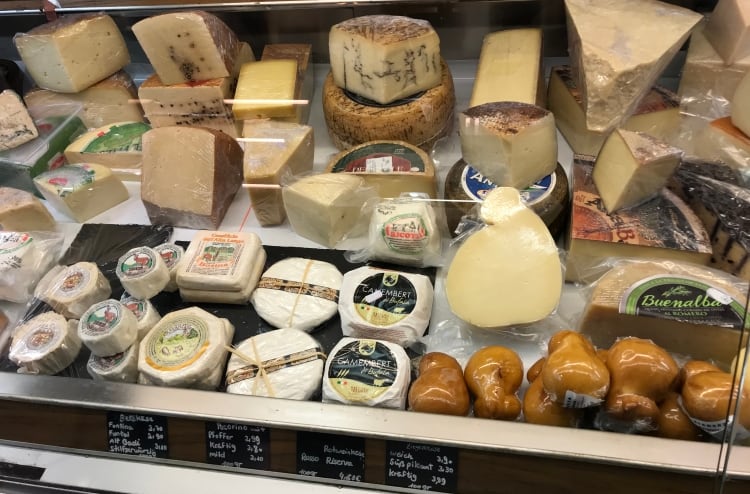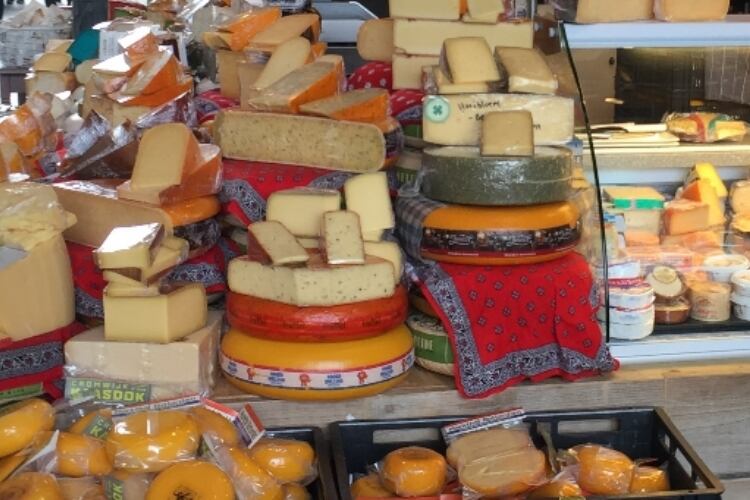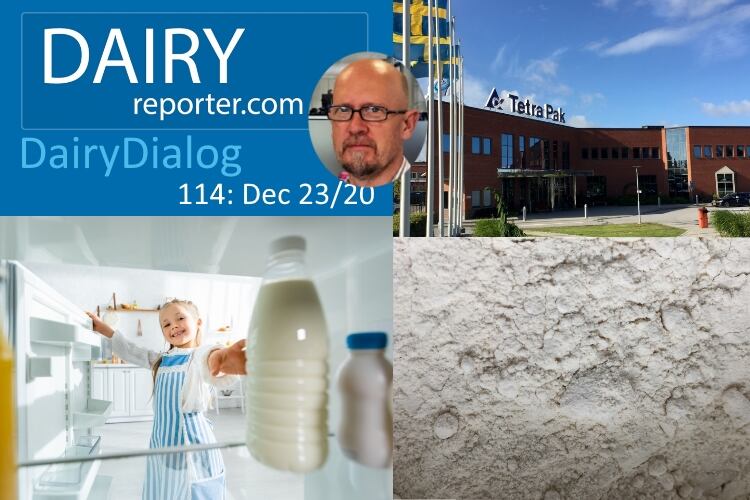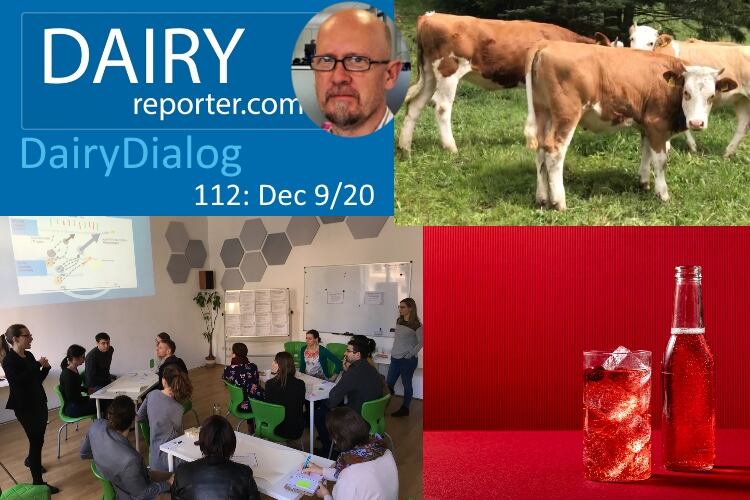What sustainability challenges do today’s cheese producers face?
Cheese manufacturers are under rising pressure to increase the sustainability of their operations, while also diversifying and differentiating their portfolio to meet consumer preferences. Common challenges include:
Food waste
Numerous factors can contribute to cheese waste, but cutting loss is the main consideration for naturally ripened cheeses like Parmesan and Gouda. It is estimated that Gouda and Parmesan producers lose 3 to 10% of cheese produced annually — approximately 220,000 tons — due to wasteful slicing, cutting, grating and shredding procedures1.
Cutting loss is predominantly caused by the removal of cheese rind. Typically, there are two reasons why manufacturers seek to remove cheese rind. During the ripening process, cheese is often treated with polyvinyl alcohol (PVA) coatings to avoid mold growth, which are non-edible. Meanwhile, moisture evaporation can lead to the cheese rind becoming thick and dry during ripening, meaning that it subsequently cannot be consumed. In both cases, the rind must be removed before further processing. Manufacturers are therefore seeking solutions that enable them to ripen cheese effectively and more sustainably, and produce an end product that guarantees both consumer safety and acceptance.
Production efficiency and yield
The volatility of milk prices worldwide affects cheese producers’ bottom line. Many are therefore looking to find ways to optimize the use of raw materials to achieve maximum productivity and prepare for price spikes. For example, raw milk prices in Europe peaked in 2007, while prices reached an all-time low in 2008/20092.
Although volatility reached pre-2007 levels between 2009 and 2017, prices lost their previous seasonal pattern3. It is this unpredictability — which has only intensified since the end of dairy quotas in Europe in 2015 — that raises concerns among cheesemakers, with many looking to take measures to make their production processes more efficient and make more with less.
What solutions are available to manufacturers to overcome these obstacles? What advantages do DSM solutions have that enable companies to meet sustainability goals?
The latest cheese ripening solutions and coagulant enzymes can help cheesemakers overcome sustainability and production efficiency challenges. These include:
Pack-Age and Pack-Age Diamond
A preservative-free, breathable membrane technology, DSM’s Pack-Age solution can help producers pack and age hard and semi-hard cheeses effectively, without compromising clean label credentials, taste or texture4. It helps to prevent mold growth during cheese ripening and reduces the wasteful crust removal process. No coatings are applied and the moisture reduction develops homogeneously throughout the cheese to avoid the development of a thick, dry rind.
Ready-to-use membranes that can be implemented with existing vacuum systems, Pack-Age and Pack-Age Diamond – from the same portfolio – enable a manual to fully automatic operation — streamlining the ripening process and thereby increasing efficiency. While Pack-Age is suitable for all types of cheese, Pack-Age Diamond is specifically designed for round products. The innovative design of the latter membrane means it can be wrapped tightly around cheese with no ‘ears’, reducing the chances of residual air being trapped and creating a more appetizing aesthetic.
By utilizing DSM’s unique ripening technology, cheesemakers can increase the yield of cheese production and control moisture losses. Combined with a reduction in cutting loss, this enables manufacturers to produce up to 10% more cheese from the same amount of milk. Research suggests that if all Gouda and Parmesan cheeses globally were ripened using Pack-Age, 200,000 tons of cheese waste could be avoided every year — reducing milk use by 3.55bn liters and CO2 emissions by 6.2m tons annually5.
Maxiren XDS
The most advanced Fermentation Produced Chymosin (FPC) coagulant available for cheese producers, Maxiren XDS is highly specific towards k-casein and can maintain low proteolysis for a more effective coagulation. This helps to speed up the production process and enables additional water binding to increase the moisture content of cheese, increasing yield by up to 1.5%, and ultimately, enhancing profitability6. Lower proteolytic activity also leads to better textural shelf life in cheese. As the texture of the cheese is retained, shredding, dicing and slicing can take place effortlessly at any point during shelf life which can help reduce the losses that occur during these processes by up to 15% and improve the carbon footprint of cheese production by approximately 12%.
As a global partner to valorize their milk to its best, DSM can provide cheese manufacturers with a broad portfolio of cheese ripening, coagulant enzymes, culture and biopreservation solutions for improving the sustainability and efficiency of cheese production, while also achieving stand-out taste and texture differentiation. Combined with DSM’s global end-to-end expert services, producers can create premium cheese products more economically and sustainably.

Are there any customer success stories you can share?
A western European cheese producer approached DSM for support with increasing the sustainability and efficiency of its Gouda production process. By implementing Pack-Age, alongside end-to-end support from DSM’s technical experts, the company was able to streamline the cheese ripening process and eliminate the risk of mold growth without the use of PVA coatings and preservatives. This allowed the customer to speed up production, eliminate the wasteful crust removal process and bring great-tasting, preservative-free Gouda products to market more cost-effectively.
How can companies that produce cheese continue to innovate and yet still work toward greater sustainability?
Despite economic uncertainty, cheese saw a spike in retail across the globe in 2020. While foodservice spend declined due to widespread bar and restaurant closures during the Covid-19 pandemic, consumers spent more time cooking and eating at home – leading to higher volumes of cheese sales via retail channels. In the US, for instance, cheese retail sales grew by 10%, of which the packaged hard cheese category recorded the strongest growth at 15%7. This presents an exciting opportunity for producers to innovate and expand their product offering, and deliver compelling and more sustainable cheese products to consumers.
1. Denkstatt report, Sustainable thinking, Version 2.0, 2015 (produced for DSM as part of a LCA analysis).
2. European Commission, Managing risk in the dairy sector: how futures markets could help, https://ec.europa.eu/agriculture/sites/agriculture/files/markets-and-prices/market-briefs/pdf/11_en.pdf
3. Ibid.
4. Nederlands Instituut voor Zuivel Onderzoek, Dutch Institute for Dairy Research.
5.The data presented is based on calculations made by Denkstatt, a consultancy company in the field of sustainability and environmental management. It compares using the cheese ripening membrane Pack-Age® versus conventional cheese ripening methods in Parmesan and Gouda.
6. Compared to 1st generation standard non-bovine chymosin coagulants. Compared to 2nd generation non-bovine chymosin coagulants that have recently become available, the yield increase is 1%.
7. Passport, Cheese in the US – analysis [report], Nov 2020.



